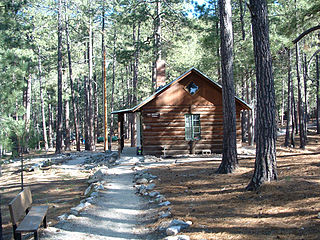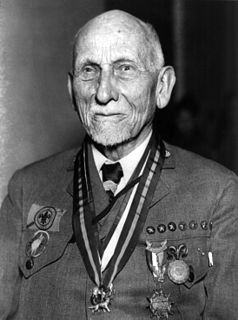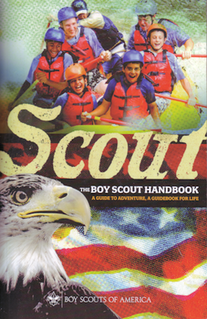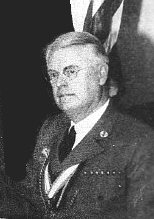
Scouting in Arizona has a long history, from the 1910s to the present day, serving thousands of youth in programs that suit the environment in which they live.

Scouting in Vermont has a long history, from the 1907 to the present day, serving thousands of youth in programs that suit the environment in which they live.

Scouting in Rhode Island has a long history, from the 1910s to the present day, serving thousands of youth in programs that suit the environment in which they live.

Daniel Carter "Uncle Dan" Beard was an American illustrator, author, youth leader, and social reformer who founded the Sons of Daniel Boone in 1905, which Beard later merged with the Boy Scouts of America (BSA).

Boy Scout Handbook is the official handbook of Scouts BSA. It is a descendant of Baden-Powell's original handbook, Scouting for Boys, which has been the basis for Scout handbooks in many countries, with some variations to the text of the book depending on each country's codes and customs.
The Boy Scouts of America (BSA), one of the largest private youth organizations in the United States, has policies which prohibit those who are not willing to subscribe to the BSA's Declaration of Religious Principle, which is usually interpreted as banning atheists, and, until January 2014, prohibited all "known or avowed homosexuals", from membership in its Scouting program. The ban on adults who are "open or avowed homosexuals" from leadership positions was lifted in July 2015. Prior to these policy changes, BSA had denied or revoked membership status or leadership positions for violation of these foundational principles. The BSA had contended that its policies were essential in its mission to instill in young people the values of the Scout Promise, or Oath, and Scout Law.

The Chief Scout Executive is the top professional of the National Council of the Boy Scouts of America. In most similar non-profit organizations, this is equivalent to the position of national executive director or secretary general.

William Hillcourt, known within the Scouting movement as "Green Bar Bill", was an influential leader in the Boy Scouts of America (BSA) organization from 1927 to 1992. Hillcourt was a prolific writer and teacher in the areas of woodcraft, troop and patrol structure, and training; his written works include three editions of the BSA's official Boy Scout Handbook, with over 12.6 million copies printed, other Scouting-related books and numerous magazine articles. Hillcourt developed and promoted the American adaptation of the Wood Badge adult Scout leader training program.

James Edward West was a lawyer and an advocate of children's rights, who became the first professional Executive Secretary, soon renamed Chief Scout Executive, of the Boy Scouts of America (BSA), serving from 1911 to 1943. Upon his retirement from the BSA, West was given the title of Chief Scout.

The Rhode Island Boy Scouts (RIBS), was an early American Scouting organization that split off from the American Boy Scouts in 1910 and merged with the Boy Scouts of America (BSA) in 1917. RIBS still exists as a trustee organization.
Scouting in the United States is dominated by the 2.7 million-member Boy Scouts of America and the Girl Scouts of the USA and other associations that are recognized by one of the international Scouting organizations. There are also a few smaller, independent groups that are considered to be "Scout-like" or otherwise Scouting related.

The Boy Scouts of America (BSA) was inspired by and modeled on the Boy Scout Association, established by Baden-Powell in Britain in 1908. In the early 1900s, several youth organizations were active, and many became part of the BSA.
The Scout and Guide movement in Australia consists of

The Boy Rangers of America was a Scouting program in the United States for boys ages 8 through 12. It was organized on January 24, 1913 in Montclair, New Jersey by Emerson Brooks. Although independent of the Boy Scouts of America, it was the precursor of the BSA's Cubbing program now known as Cub Scouting.

Elwood Stanley Brown was an American sports organizer in Illinois, Manila, Europe, and South America. In his short life, he made three huge accomplishments: (1) the intensive promotion of sports among Filipinos, (2) originating international sports competitions in Asia, and (3) the promotion of the Olympics around the world. In addition, he started (1910) the first Boy Scout troops in the Philippines, and initiated and organised the American Expeditionary Forces games and its corollary the Inter-Allied Games at the end of the War in Europe.
There were other Scouting and Scout-like organizations that arose over the years in the United States.














